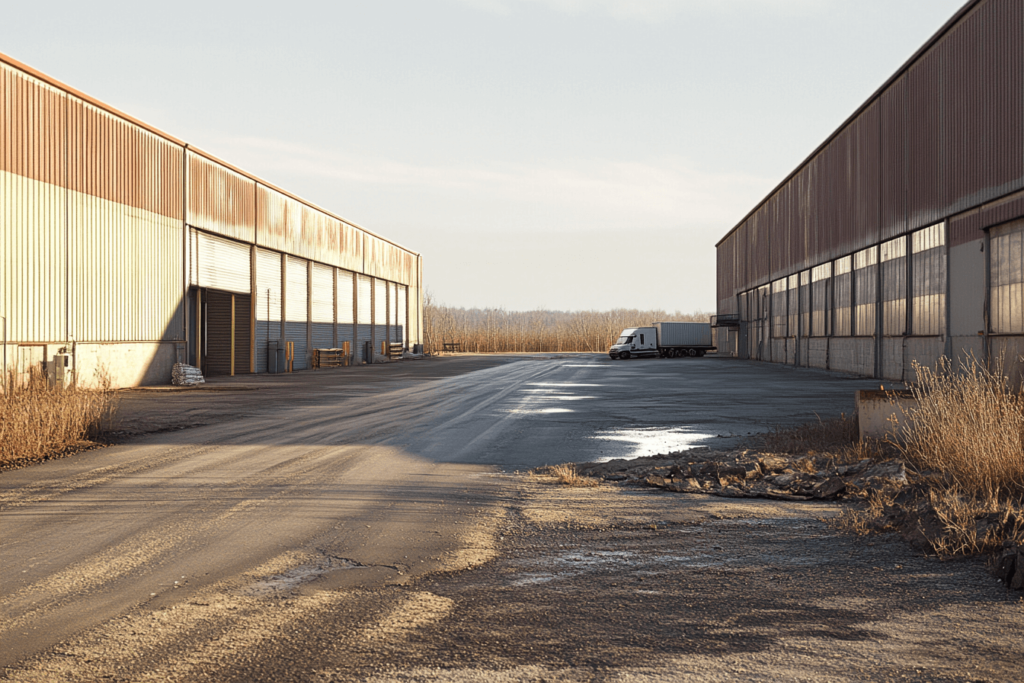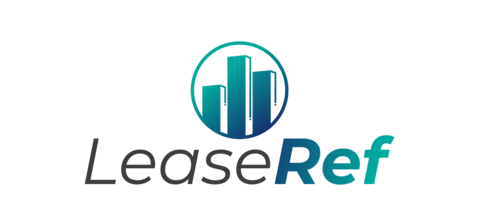What Are Easements?
Easements are legal rights that allow one party to use another party’s land for a specific purpose, without transferring ownership. In commercial real estate (CRE), easements are especially important as they often affect access, utility lines, or property boundaries.
For instance, a property owner may have to grant a utility company the right to install power lines or give an adjacent property access to a road that crosses their land.
Types of Easements in Commercial Real Estate
In commercial real estate, understanding the various types of easements is important for all parties involved in a commercial property. This allows for expectations to be understood from the outset, and is key when it comes to protecting property rights and ensuring smooth transactions. Here are the key types of easements CRE buyers and owners should be aware of:
- Appurtenant Easements
These easements directly benefit a neighboring property, meaning the easement is tied to the land itself. When the property is sold, the easement transfers to the new owner. An example would be a shared driveway that allows access to multiple properties. The right to use that driveway stays with each property, regardless of ownership changes. - Easement In Gross
Easements In Gross benefit a person or entity rather than a specific property. For example, a utility company may hold an easement to place power lines or pipelines across your land. This type of easement is not tied to any parcel of land and remains even if the property is sold. - Easement by Necessity
If a property is landlocked and cannot be accessed without crossing another parcel, an easement by necessity may be created. This is common in CRE transactions where a piece of land must have legal access to roads or utilities, even if it requires crossing a neighboring property. Without this, a landlocked property may be deemed unusable for commercial purposes. - Utility Easements
Utility easements are granted to service providers like electric, water, or telecommunications companies, allowing them to install, maintain, and repair infrastructure on private property. These easements are vital for commercial buildings so they can remain functional and connected to essential services. For instance, an office complex might need a utility easement to allow for underground water lines or fiber-optic cables to service the property. - Prescriptive Easements
A prescriptive easement occurs when someone uses part of a property openly, continuously, and without the owner’s permission for a legally defined period. In CRE, this might happen if a neighboring business uses a portion of land for parking or access. After the required time period (often 10-20 years), the user could claim a legal right to continue using that land, even if they don’t own it.
What is a Prescriptive Easement?

A prescriptive easement is kind of like squatter’s rights, but instead of taking over the whole property, it’s about securing the legal right to use a specific part of someone else’s land. In commercial real estate, this can happen when a neighboring business, tenant, or landowner uses part of your property for an extended period without permission — whether it’s a driveway, a parking area, or even a loading dock.
If they do this openly and continuously for a certain number of years, they might be able to claim a prescriptive easement, meaning they have the legal right to keep using that part of the land.
Here’s a quick example: Say a warehouse has been using a small access road that runs across your property to make deliveries. If they’ve been doing this for 15 years without your permission and you’ve never objected or stopped them, you may not be able to avoid their claim of a prescriptive easement, securing their right to continue using that road.
The idea behind prescriptive easements is that if the property owner doesn’t stop the use or doesn’t know about it and it goes on for long enough, the law might recognize that use as a right.
Prescriptive Easement vs. Adverse Possession
While prescriptive easements and adverse possession are similar, they’re not the same thing. Both involve using someone else’s land without permission for a long time, but there’s a key difference: with adverse possession, the user ends up owning the land; with a prescriptive easement, they just get the right to use it.
Think of it this way: if you drive through your neighbor’s property to get to your commercial lot every day for 15 years, without permission, and meet all the legal requirements, you could end up with a prescriptive easement allowing you to keep driving through. But you won’t own the strip of land you drive on — the neighbor still does.
On the other hand, if you had built a storage shed on that same piece of land and maintained it for that time period, you could potentially claim adverse possession and actually take ownership of that piece of land.
Both legal concepts protect long-term users of land, but a prescriptive easement is about securing the right to use, while adverse possession can transfer ownership.
Elements Required to Establish a Prescriptive Easement
For a prescriptive easement to be legally recognized, several criteria must be met. Here’s a detailed breakdown of the elements, supported by relevant case law that shows how these concepts are applied in real commercial real estate scenarios:
- Adverse Use:
The use must be without the permission of the property owner. A good example comes from O’Dell v. Stegall, where the court found that the adverse use of a driveway over 15 years, without permission from the owner, was enough to establish a prescriptive easement. In CRE, this could involve a neighboring business using an access road or a parking area without permission. - Actual, Open, and Notorious Use:
The use of the land must be obvious, not hidden or secretive. In Duke v. Western Water Co., the court found that the open use of a water pipeline on another’s land was visible and notorious enough to qualify as a prescriptive easement, because it was not concealed from the property owner. This kind of transparency is crucial in commercial cases where easements affect utility lines or access roads.- Case law: Duke v. Western Water Co., 9 Cal. 190 (1858)
- Continuous and Uninterrupted Use:
The use must be continuous over a set period. For example, in Roberts v. Swim, a prescriptive easement was granted when a neighbor continuously used a road for more than 20 years. In commercial real estate, this often applies to roadways or access points that have been used for deliveries or services without interruption. - Required Period of Time:
The required time for a prescriptive easement varies by state. In Texas, for example, the use must be continuous for at least 10 years. In California, it’s typically 5 years. Understanding these time frames is crucial for commercial property owners to assess risk.
How Prescriptive Easements Affect Commercial Real Estate
Prescriptive easements, once established, can have lasting impacts on commercial properties, influencing everything from market value to property rights. It’s no small thing.
First and foremost, it’s important to understand that a prescriptive easement grants the right to use part of a property, but it does not transfer ownership. In cases like O’Dell v. Stegall, while the neighbor secured a legal right to use the driveway in question, they didn’t gain ownership over that portion of the land. This means the property owner retains the title but must allow the easement holder uninterrupted access.
Such easements can also reduce the value of the property, particularly in commercial real estate, where land is valued based on its potential for development and unrestricted use. If a prescriptive easement limits how the land can be used—such as preventing the construction of buildings in certain areas or restricting access—it can make the property less attractive to buyers or investors, ultimately lowering its market value.
Additionally, property owners cannot interfere with the easement holder’s rights once the easement is legally established. For example, in Roberts v. Swim, the landowner couldn’t block or alter the neighbor’s access to the road after the court recognized the prescriptive easement.



